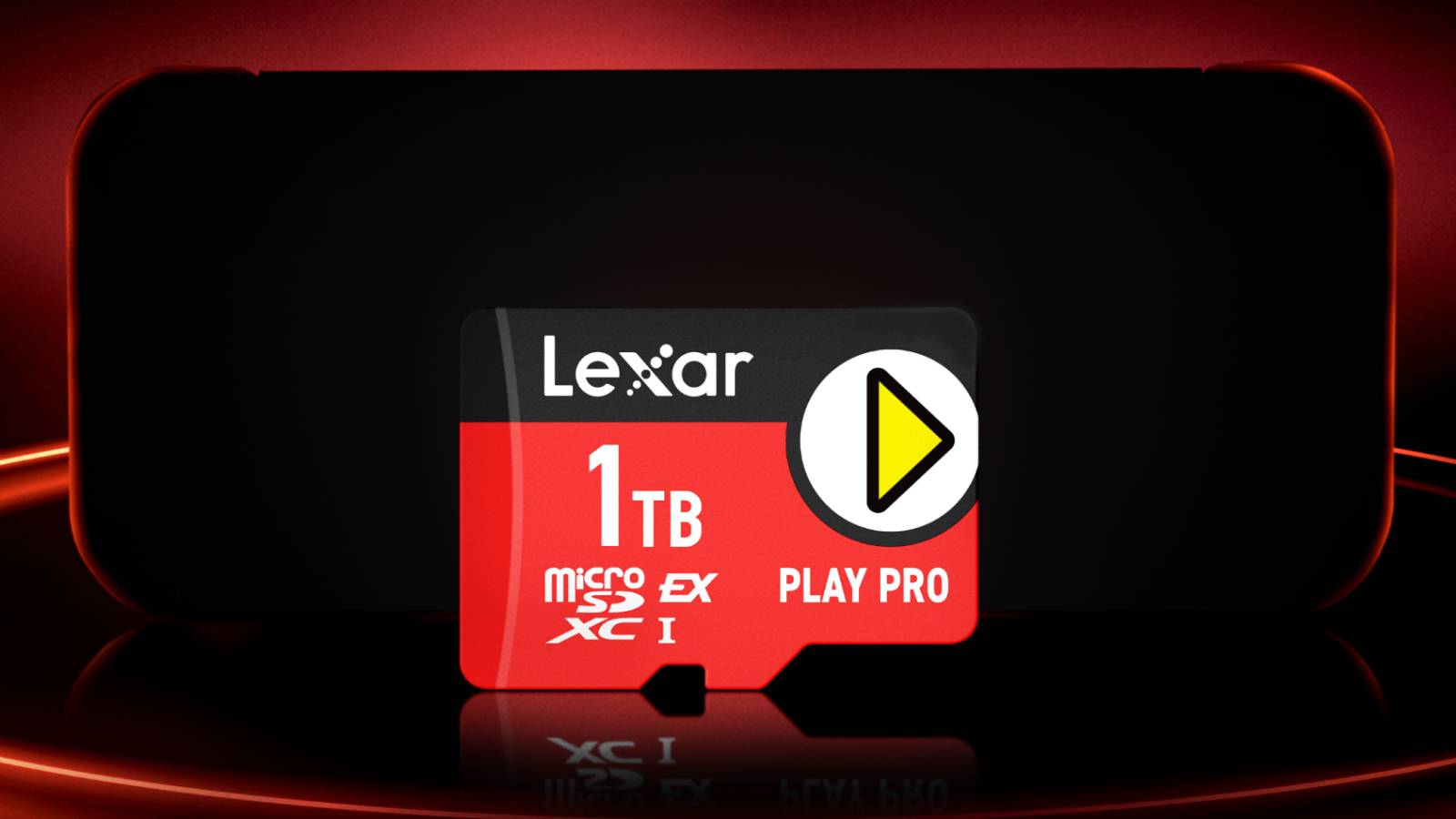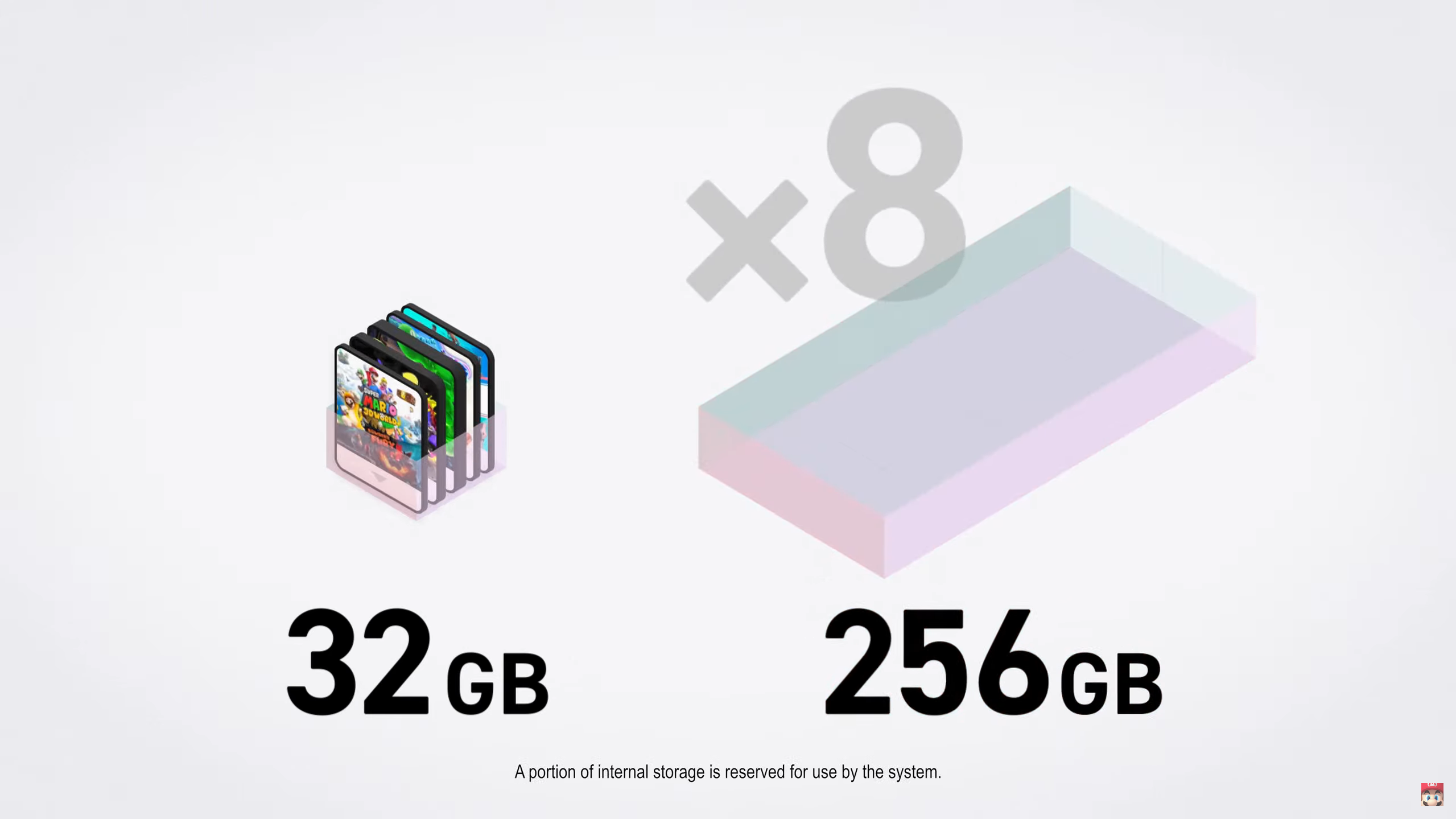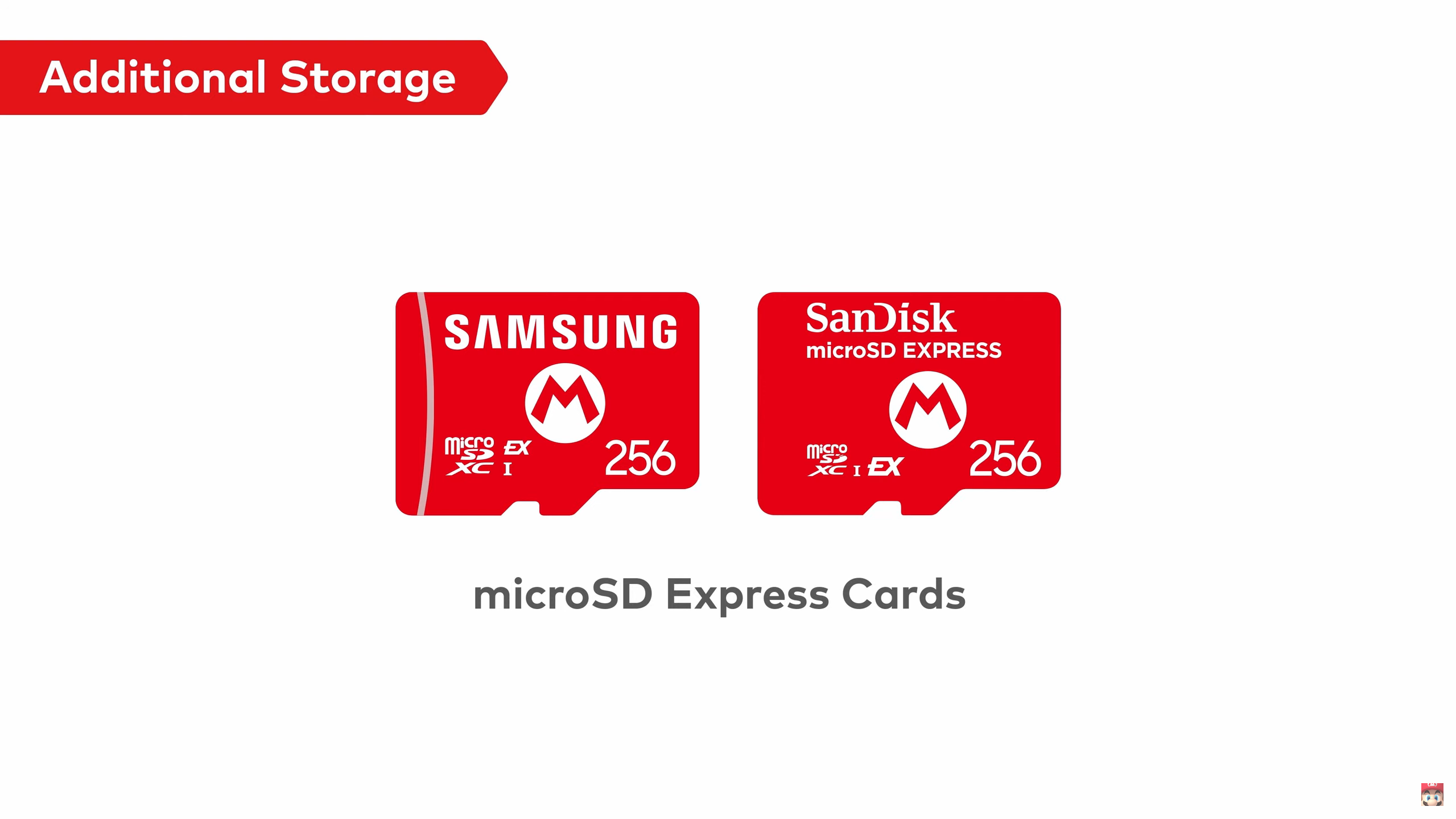Nintendo Switch 2's support for MicroSD Express standard will hurt your wallet: Here's why
Mario might have to take on more plumbing jobs to afford this one.

Following the grand reveal of the Nintendo Switch 2, we learned a handful of technical details about the console. Most notably, the Switch 2 is set to require a different MicroSD standard than its predecessor, named MicroSD Express. And, if current pricing for announced products is anything to go by, it will be painful on your wallet. In fact, on a capacity basis, they're pricier than many modern SSDs — MicroSD Express cards range from 20 to 25 cents per GB of storage, whereas bargain basement SSDs can retail for as little as 5 to 6 cents per GB. That's partly due to the NVMe and PCIe 3.0 support, commonly found on M.2 SSDs, that's baked right into the new MicroSD Express cards.
Sandisk's MicroSD Express cards have an MSRP of $49.99 for just 128GB of storage, with the 256GB variant at $64.99. These cards operate at speeds up to 880 MB/s read, 480 MB/s write, and 100 MB/s sustained write.
However, Lexar has announced larger capacities of up to 1TB. But, you might want to brace your wallet, as the prices are predictably not pretty for this new standard.
Lexar's Play Pro 1TB MicroSD Express card costs a staggering $199.99, with the 512 GB model at $99.99, and 256 GB at $49.99. Lexar boasts that these cards can achieve speeds of up to 900 MB/s read and 600 MB/s write.
Sandisk's MicroSD Express cards cost up to $0.39 per-gigabyte for the 128GB model, while the 256GB model costs $0.25 per-gigabyte. Lexar's options seem to be the best deal, with all three storage variants at a standardized cost of $0.20 per gigabyte, while also seemingly boasting higher-end specs.
Why storage is more important than ever for Switch 2

We know that the Switch 2 will ship with 256GB of storage as standard, but there's a catch. Even if you purchase a physical game, you might not be able to play it immediately just by inserting the cartridge. Some titles will require the full title to be downloaded and installed onto the system, with the cartridge serving as a glorified physical license key, which Nintendo calls a "Game-Key Card". This might be down to companies and publishers wanting to cut down on cartridge costs, especially as the price of NAND storage is expected to rise.
For example, if you wanted to purchase the Street Fighter 6 cartridge, you'll end up having to install an additional 50GB of data onto your system right off of the bat. This means that the meager 256GB of storage that the console ships with will inevitably fill up. This reveals a hidden cost for the privilege of using Nintendo's new system, expensive new MicroSD cards to expand storage, unless you're willing to play the frustrating game of redownloading titles and managing storage any time you insert a Game-Key Card into your system.
Get Tom's Hardware's best news and in-depth reviews, straight to your inbox.
The Switch 2's MicroSD Express standard explained

While it might be tough to tell the difference between a standard MicroSD card and a MicroSD Express card at a glance, potentially causing some confusion for potential buyers, the technical details explain that MicroSD Express is a big jump from the UHS-I standard used by the Nintendo Switch.
The SD Association's current SD Express speed classifications divide MicroSD Express into four categories: Class 150, Class 300, Class 450, and Class 600. The numbers at the end of each classification denote the minimum read / write performance of the cards in MB/s. MicroSD Express cards also have significantly more pins than their older UHS-I brethren, at either 16 or 17, compared to just eight.
Underpinning the technology are NVMe and PCIe 3.0 interfaces, which allow for speeds of up to 2GB/s (using a PCIe 4.0 interface). You can read the deep-dive details of the tech on our sister site, AnandTech.
However, with technical details of the Switch 2's capabilities on the lighter side, we still don't know if the console will be able to match those theoretical speeds, and no currently-announced MicroSD Express card is able to achieve those peak speeds, either.
“The new microSD Express standard offers us a way to deliver a memory card with incomparable performance in that form factor,” said Joey Lopez, Director of Brand Marketing at Lexar in a press release. “We’re excited to create a card for our customers that leverages the benefits of this new standard and prepares gamers for the next generation of handheld gaming.”
So, there's a gulf between the fastest UHS-I MicroSD Card and the fastest theoretical MicroSD Express card. The fastest announced card is currently the Lexar Play Pro MicroSDXC Express card, but those speeds will inevitably have to be tested once the Switch 2, and the MicroSD Express cards, are in our hands. For now, you can check out our hands-on with the Nintendo Switch 2.

Sayem Ahmed is the Subscription Editor at Tom's Hardware. He covers a broad range of deep dives into hardware both new and old, including the CPUs, GPUs, and everything else that uses a semiconductor.
-
Heat_Fan89 The prices I saw on Amazon aren't too overly expensive. A 256GB card $60 vs $23 for a Samsung non express. So that is almost 3x as much. People got upset and complained about the PS5 Pro and all the other stuff you needed to buy and this is looking pretty close to a PS5 Pro pricing structure.Reply -
thisisaname Reply
Plus by the time the you easily buy one the price of the cards will have come down some more.Heat_Fan89 said:The prices I saw on Amazon aren't too overly expensive. A 256GB card $60 vs $23 for a Samsung non express. So that is almost 3x as much. People got upset and complained about the PS5 Pro and all the other stuff you needed to buy and this is looking pretty close to a PS5 Pro pricing structure. -
AurynTheCat Reply
1TB Gen 2 NVMe drives were like $200 when the PS5 was released. The recently announced 1 TB Lexar micro SD Express card will also be $200. And it will likely come down in price. Expensive storage is ALWAYS the case when a new console is released.Notton said:$60 can get you a 1TB Gen 3 NVMe drive of the 2230 variety. -
CelicaGT The Switch 2 implementation will mainstream the Express standard which will drive prices down. This is a good thing.Reply -
Notton Reply
Back in 2020, a 1TB NVMe SSD would have cost $100.AurynTheCat said:1TB Gen 2 NVMe drives were like $200 when the PS5 was released. The recently announced 1 TB Lexar micro SD Express card will also be $200. And it will likely come down in price. Expensive storage is ALWAYS the case when a new console is released.
But if you're talking about a Gen4, 7000MB/s capable drive, like the WD SN580, that would have cost $230.
Mind you, that's assuming you could even buy a PS5 due to 2020 shenanigans.
By the time 2021 rolled around, the SSD prices were tanking, and you still couldn't buy a PS5.
And unlike a PS5 using the latest hardware, the Switch 2 hardware is from 2020.
Like, c'mon man, come up with a better excuse. -
AurynTheCat Reply
Mid-2021, I purchased a XPG 1TB GAMMIX S70 Blade PCIe Gen4 M.2 228 for $149.99. It was the cheapest COMPATIBLE drive I could find for the PS5 and it was a year after release. I call BS. You can find Reddit threads of people discussing the pricing around the time of release: https://www.reddit.com/r/PS5/comments/iz649d/expanding_your_ps5_drive_space_note_that_nvme/. If you were buying a $100 drive it either wasn't whitelisted by Sony or it was a knock off of some kind.Notton said:Back in 2020, a 1TB NVMe SSD would have cost $100.
But if you're talking about a Gen4, 7000MB/s capable drive, like the WD SN580, that would have cost $230.
Mind you, that's assuming you could even buy a PS5 due to 2020 shenanigans.
By the time 2021 rolled around, the SSD prices were tanking, and you still couldn't buy a PS5.
And unlike a PS5 using the latest hardware, the Switch 2 hardware is from 2020.
Like, c'mon man, come up with a better excuse. -
AurynTheCat Reply
Let's also not disregard that Lexar cards are premium storage devices. Not equivalent to some bargain basement possibly not compatible SSD you think you know about for the PS5 at launch.Notton said:Back in 2020, a 1TB NVMe SSD would have cost $100.
But if you're talking about a Gen4, 7000MB/s capable drive, like the WD SN580, that would have cost $230.
Mind you, that's assuming you could even buy a PS5 due to 2020 shenanigans.
By the time 2021 rolled around, the SSD prices were tanking, and you still couldn't buy a PS5.
And unlike a PS5 using the latest hardware, the Switch 2 hardware is from 2020.
Like, c'mon man, come up with a better excuse. -
tennis2 The switch 1 game cartridges aren't plug&play either though. There's still a good amount of "install" time when you insert a cartridge (and probably downloads all updates released since the OG version).Reply
Can't weigh in over the "necessity" of mSDe compared to regular mSD, but I can't imagine they'd choose an uber expensive fledgeling tech if they didn't have to. And I don't see Nintendo adopting user-installed internal SSDs